Traffic Safety Systems
Looking for a safe and easy way to transport heavy equipment or materials? Look no further than the Traffic Safety Systems utility cart. This rugged and reliable cart is specifically designed to withstand the rigours of everyday use, making it perfect for busy shops and businesses. Built from tough steel, the Traffic Safety Systems utility cart is built to last, with a powder-coated finish that resists scratches and corrosion. The cart’s spacious platform can easily accommodate a variety of loads, while the durable wheels provide smooth and easy transportation over rough surfaces. For added safety, the cart also features a built-in braking system that keeps it firmly in place when parked.
-

When it comes to workplace safety, every precaution counts. From the bustling floors of manufacturing plants to the busy aisles of warehouses, ensuring the well-being of employees is paramount.
One often-overlooked yet highly effective tool for enhancing safety is a safety bollard. These sturdy posts aren’t just for traffic control; they can be utilised in a variety of creative ways to bolster safety measures within your workplace. Let’s explore five unique ways to leverage a safety bollard to create a safer working environment.
-
Traffic Management
The primary function of safety bollards is to manage traffic flow, both pedestrian and vehicular. Strategically placing safety bollards in high-traffic areas can help delineate walkways, designate vehicle lanes, and prevent accidents caused by collisions.
By clearly marking off areas where vehicles are not permitted, such as pedestrian zones or equipment storage areas, you can significantly reduce the risk of accidents and injuries.
-
Protection Against Impact
In busy industrial settings, accidents involving moving equipment or vehicles are a constant concern. Installing safety bollards as protective barriers around sensitive equipment, structural columns, or valuable assets can mitigate the impact of collisions.
These sturdy posts act as a first line of defence, absorbing the force of impact and preventing costly damage or injury. Whether it’s safeguarding machinery from forklift collisions or protecting storefronts from runaway shopping carts, safety bollards provide valuable protection against accidental damage.
-
Pedestrian Safety Zones
Creating designated pedestrian safety zones is essential for workplaces where foot traffic and machinery coexist. By installing a safety bollard to cordon off pedestrian walkways or assembly areas, you can ensure that employees can move about safely without the risk of encountering moving equipment or vehicles.
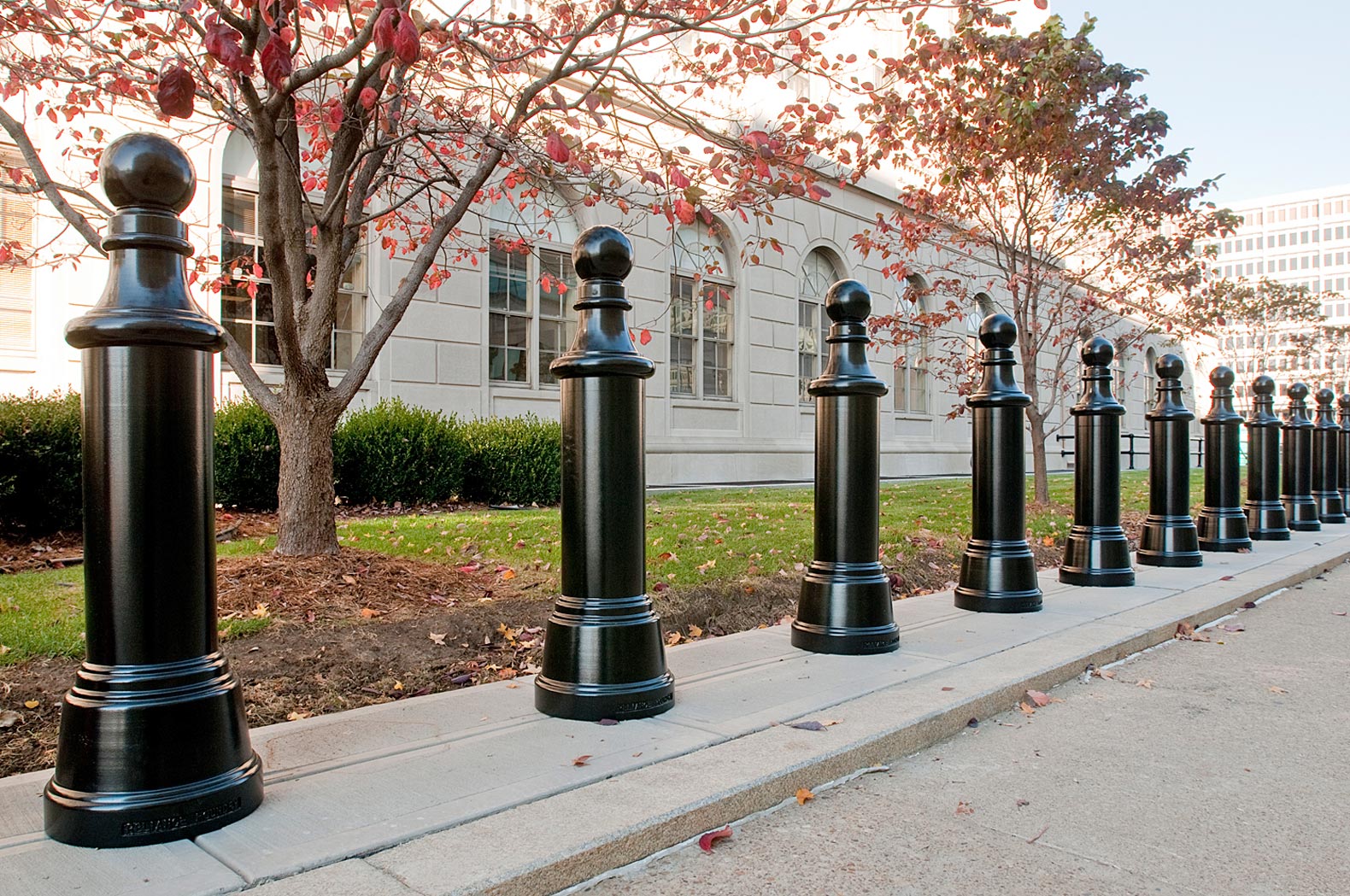
This simple yet effective measure promotes awareness of pedestrian pathways and reduces the likelihood of accidents caused by inadvertent encounters between pedestrians and machinery.
-
Visual Signalling
Safety bollards aren’t just functional; they can also serve as visual cues to convey important safety information. By incorporating brightly coloured or reflective safety bollards into your workplace environment, you can draw attention to potential hazards, restricted areas, or emergency exits.
These visual cues enhance situational awareness among employees and visitors, helping to prevent accidents and facilitate rapid responses in emergency situations.
-
Temporary Work Zones
In dynamic work environments where layouts change frequently or temporary construction projects are underway, safety bollards offer a flexible solution for creating temporary work zones.
Whether you need to cordon off an area for maintenance, repair, or construction work, safety bollards can be quickly deployed and easily repositioned as needed. Their modular design and portability make them ideal for adapting to evolving workplace requirements while maintaining safety standards.
Conclusion
Safety bollards are versatile tools that can play a crucial role in enhancing workplace safety. From managing traffic flow and protecting against impact to creating designated pedestrian zones and conveying important safety information, a safety vest offers a multitude of benefits for businesses seeking to prioritise the well-being of their employees. By incorporating these simple yet effective devices into your safety strategy, you can create a safer and more secure working environment for everyone.
Remember, when it comes to safety, every precaution matters and safety bollards are one tool that shouldn’t be overlooked. So, whether you’re looking to improve traffic management, protect valuable assets, or promote pedestrian safety, consider the unique ways in which safety bollards can enhance safety in your workplace.
-
-
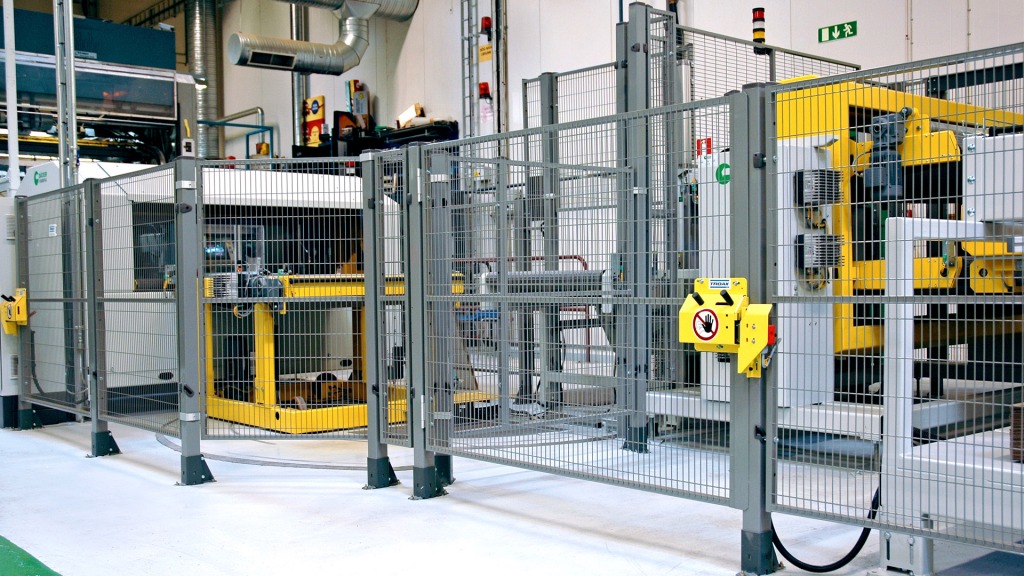
Workplace safety is a top priority for businesses and organisations across all industries. Ensuring the well-being of employees and creating a safe working environment not only promotes productivity but also reflects a company’s commitment to its workforce.
One critical aspect of workplace safety is machine guarding, which plays a pivotal role in preventing accidents and injuries related to machinery and equipment.
Machine guarding can be defined as the implementation of protective measures and devices to shield workers from hazardous machine components and processes. It encompasses various types of safeguards, including physical barriers, electronic sensors, interlocks, and more.
By effectively implementing workplace machine guarding, businesses can significantly reduce the risk of workplace accidents and create a secure operational environment for their employees.
Machine Guarding
Machine guarding is a critical element of workplace safety, designed to protect employees from the hazards posed by machinery and equipment.
It involves the use of physical barriers, such as enclosures, fencing, and shields, to prevent contact with moving parts and potential sources of danger.
Additionally, electronic sensors and interlocking mechanisms can also be employed to ensure that machines cease operation when a potential hazard is detected.
The benefits of implementing machine guarding in the workplace are multifaceted. Not only does it minimise the risk of injuries and accidents, but it also fosters a culture of safety and responsibility among employees.
By creating a secure working environment, businesses can boost employee morale, reduce absenteeism due to injuries, and enhance overall operational efficiency.
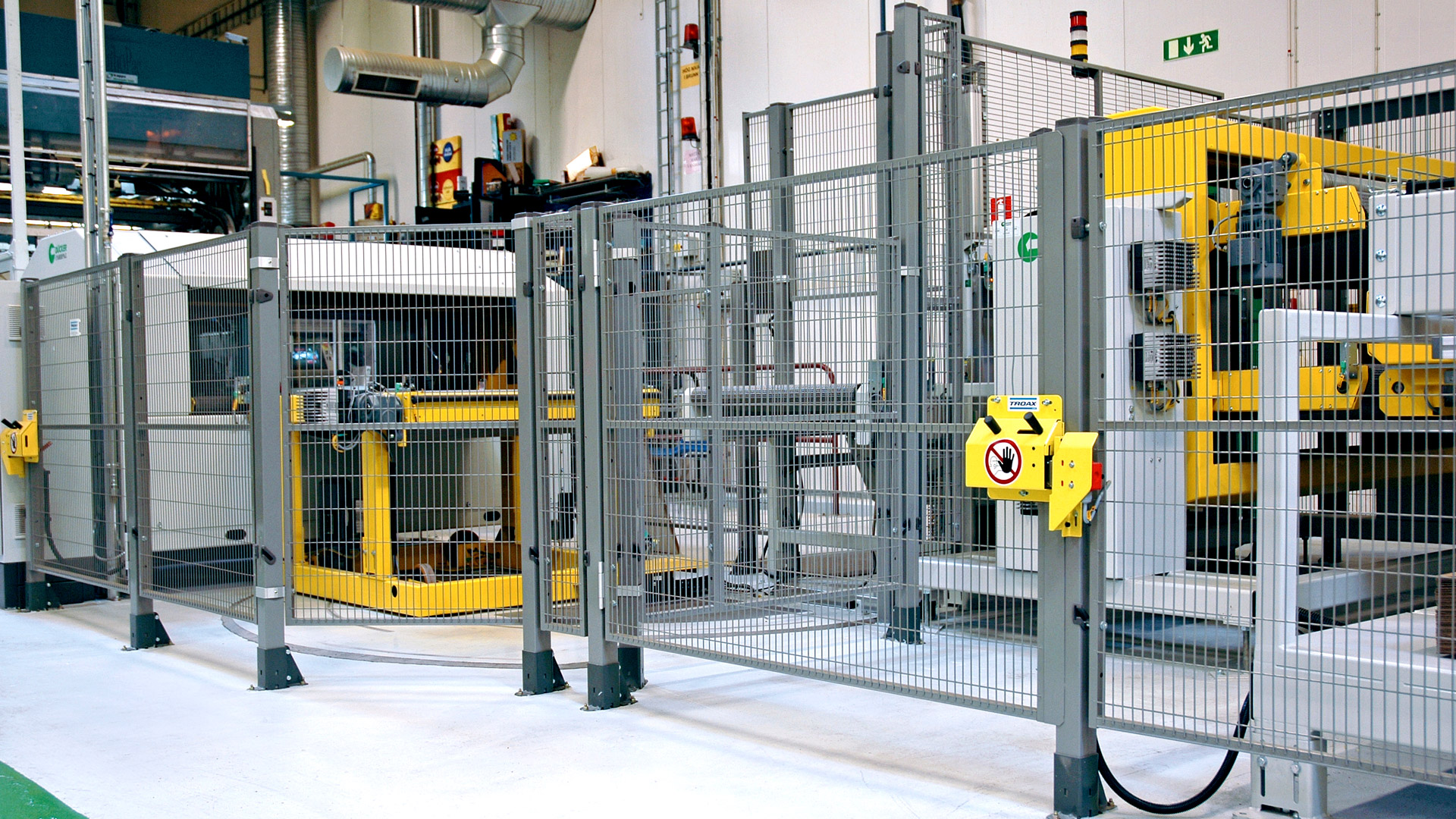
Risk Assessment and Hazard Identification
Conducting comprehensive risk assessments is a fundamental aspect of ensuring workplace safety. By identifying potential hazards related to machinery and equipment, businesses can proactively mitigate risks and implement tailored machine-guarding solutions.
Risk assessment also plays a pivotal role in determining the specific types of machine guarding required for different operational processes.
Methods for identifying potential hazards include conducting thorough equipment inspections, analysing historical incident data, and engaging employees in the hazard identification process.
By involving workers in risk assessment and hazard identification efforts, businesses can leverage their frontline expertise to enhance safety protocols and machine-guarding measures.
Implementing Comprehensive Machine Guarding Solutions
Implementing effective machine guarding systems involves a systematic approach that considers the unique requirements of each piece of machinery and the specific conditions of the workplace.
Businesses should follow a step-by-step guide to ensure that machine guarding is implemented comprehensively and in accordance with regulatory standards.
Selecting appropriate guarding methods based on specific machinery and workplace conditions is crucial. Factors such as the type of machinery, operational processes, and employee interaction with equipment should all be taken into consideration.
Additionally, providing adequate training for employees working with guarded machinery is essential to ensure that they understand the purpose and function of the safeguards in place.
Maintenance and Inspection Procedures
Regular maintenance and inspection of machine guarding systems are vital to ensuring their ongoing effectiveness.
Over time, wear and tear, environmental factors, and operational changes can impact the integrity of machine guards.
Therefore, businesses should establish robust maintenance schedules and inspection procedures to uphold the reliability of their machine guarding measures.
Best practices for maintaining and ensuring the effectiveness of guards over time include conducting routine inspections, promptly addressing any issues or damage, and providing ongoing training to employees on the importance of maintaining machine guarding integrity.
By prioritising the maintenance of machine guarding systems, businesses can uphold a consistent standard of workplace safety.
Conclusion
Comprehensive machine guarding is an indispensable component of workplace safety, serving as a proactive measure to protect employees from machinery-related hazards.
By understanding the importance of machine guarding, complying with legal requirements, conducting thorough risk assessments, and implementing tailored guarding solutions, businesses can create a safer working environment for their employees.
Source By – https://tinyurl.com/3k93zden
-

When it comes to workplace safety, the significance of addressing potential hazards cannot be overstated. Industrial handrails play a pivotal role in ensuring the safety of workers in industrial settings.
In this comprehensive guide, let’s delve into the importance of heavy-duty industrial handrail and shed light on the potential risks and dangers associated with inadequate or poorly maintained handrails in the workplace.
-
Understanding Workplace Hazards
Workplace hazards in industrial environments encompass various risks, particularly concerning industrial handrails, where the primary concern revolves around falls and accidents.
The consequences of these hazards can range from minor injuries to life-threatening incidents, underscoring the critical importance of addressing them effectively. Businesses must understand the gravity of these risks to prioritise the safety and well-being of their employees.
Mitigating workplace hazards associated with industrial handrails requires proactive measures. This involves regular inspections to identify potential safety concerns, ensuring compliance with safety regulations, and providing comprehensive training to employees on proper handrail usage and maintenance.
By implementing these measures, businesses can create a safer work environment, reducing the likelihood of accidents and injuries. Prioritising safety not only protects employees but also fosters a culture of responsibility and productivity within the workplace, contributing to the overall success of the organisation.
-
Importance of Industrial Handrails
Industrial handrails play a pivotal role in ensuring workplace safety by offering a stable support system to prevent falls and accidents in industrial environments. These structures act as a crucial line of defence against potential hazards, safeguarding the well-being of employees and minimising the risk of injuries. However, the effectiveness of handrails relies heavily on proper installation and regular maintenance to ensure their structural integrity and functionality.
It is imperative for businesses to prioritise the installation and maintenance of industrial handrails to uphold their effectiveness in mitigating workplace hazards. Regular inspections, repairs, and adherence to safety standards are essential practices to ensure that handrails remain reliable and robust over time.
By investing in the proper upkeep of handrails, companies can create a safer working environment, reduce the likelihood of accidents, and foster a culture of employee well-being and productivity.

-
Regulations and Standards
Workplace safety regulations and industry standards are essential components in safeguarding employees and ensuring compliance within industrial environments. Specifically regarding industrial handrail, there exist stringent guidelines governing their design, installation, and maintenance to mitigate potential hazards effectively.
Employers bear a legal responsibility to adhere to these standards, as failure to do so not only compromises employee safety but also invites regulatory penalties and liabilities.
Compliance with handrail regulations is crucial for employers to provide a safe working environment for their employees. This entails ensuring that handrail systems meet specified design criteria, are installed correctly to withstand anticipated loads and undergo regular maintenance to prevent structural deficiencies.
By prioritising compliance with industry standards, employers demonstrate a commitment to workplace safety while mitigating the risk of accidents and injuries. Additionally, adherence to regulations fosters a culture of responsibility and accountability, promoting the overall well-being and productivity of the workforce.
-
Best Practices for Industrial Handrail Safety
Ensuring the safety of industrial handrails necessitates the implementation of comprehensive best practices encompassing inspection, maintenance, and usage protocols. Regular inspections conducted by trained personnel serve as a proactive measure to detect any structural deficiencies or signs of wear and tear.
Timely maintenance interventions following these inspections are essential for addressing identified issues promptly, thereby preventing accidents and injuries resulting from compromised handrail integrity.
Furthermore, employee training and awareness initiatives play a pivotal role in promoting handrail safety within the workplace. Educating workers about proper handrail usage, including guidelines for holding onto handrails while navigating stairs or elevated platforms, can significantly reduce the risk of accidents.
Additionally, raising awareness about the importance of reporting any observed defects or hazards associated with handrails fosters a culture of collective responsibility for safety among employees. By prioritising these best practices, businesses can enhance handrail safety standards, mitigate workplace risks, and uphold a conducive environment for employee well-being and productivity.
Summing Up
The significance of custom guard rail solutions in mitigating workplace hazards cannot be overlooked. By prioritising the proper installation of industrial handrail, maintenance, and usage of handrails, businesses can significantly enhance the safety of their employees.
It is imperative for employers to underscore the critical role of industrial handrails and encourage a safety-oriented approach within their respective workplaces. By doing so, businesses can create a safer and more secure environment for their employees, ultimately fostering a culture of safety and well-being within the workplace.
-
-
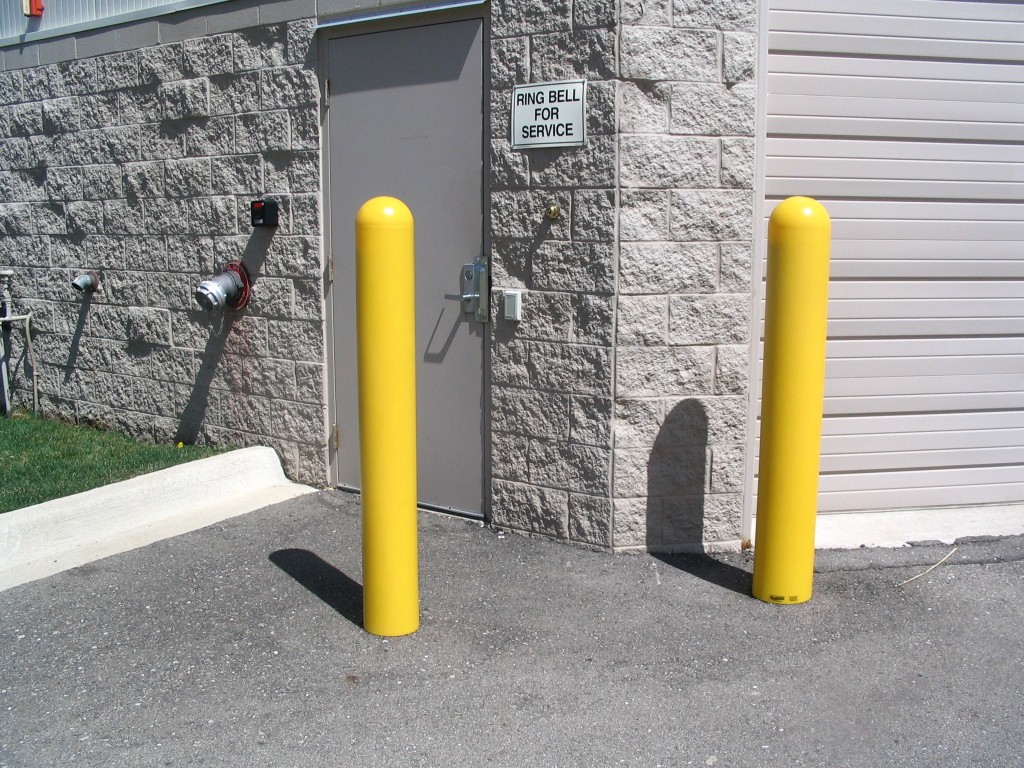
When it comes to managing traffic and parking spaces effectively, parking bollards play a crucial role. These sturdy, often overlooked fixtures serve as reliable barriers, guiding vehicles and protecting pedestrians. However, with the myriad of options available, selecting the right parking bollard for your specific needs can be a daunting task.
In this comprehensive buyer’s guide, we’ll navigate through the essential factors to consider, ensuring you make an informed decision.
Understanding the Purpose of Parking Bollards
Before delving into the selection process, it’s vital to grasp the primary functions of parking bollards. These versatile structures serve various purposes, including:
- Traffic Control: Parking bollards effectively manage vehicular flow, preventing unauthorized access to restricted areas.
- Safety: They act as protective barriers, safeguarding pedestrians, buildings, and valuable assets from potential collisions.
- Security: Parking bollards can deter theft and vandalism, providing an additional layer of security to your premises.
Types of Parking Bollards
When exploring the market for parking bollards, you’ll encounter an array of options, each designed to fulfil specific requirements. Here are some common types:
- Fixed Bollards: These are permanently installed and offer robust protection against vehicle impact. Ideal for long-term applications where security is paramount.
- Removable Bollards: Designed for flexibility, these bollards can be easily removed to accommodate temporary access or maintenance activities.
- Retractable Bollards: Offering a balance between security and accessibility, retractable bollards can be raised or lowered as needed, providing controlled entry to designated areas.
- Decorative Bollards: Beyond functionality, decorative bollards enhance the aesthetic appeal of your surroundings while still offering practical benefits.
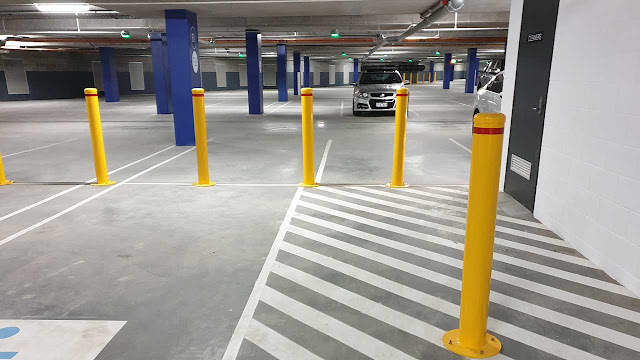
Key Considerations for Selection
Material
The material of your parking bollard greatly influences its durability and aesthetic appeal. Common materials include stainless steel, cast iron, and high-density polyethylene (HDPE). Consider the environmental conditions and desired longevity when selecting the material.
Installation Requirements
Evaluate the site where the parking bollard will be installed. Consider factors such as ground surface, accessibility for installation, and any underground utilities that may affect the process.
Visibility and Reflectivity
Ensuring the visibility of parking bollards is crucial for both drivers and pedestrians, especially in low-light conditions. Opt for bollards with reflective strips or lighting features to enhance visibility and prevent accidents.
Security Level
Assess the level of security required for your application. High-security environments may necessitate bollards with anti-ram features or integrated locking mechanisms to deter unauthorized access effectively.
Compliance Standards
Ensure that the parking bollards you choose comply with relevant safety and accessibility standards. Compliance not only ensures safety but also avoids potential legal liabilities.
Budget Considerations
While quality should never be compromised when it comes to parking bollards, it’s essential to establish a realistic budget for your project. Consider the initial investment, installation costs, and long-term maintenance expenses when evaluating different options.
Conclusion
Selecting the right parking bollard involves careful consideration of various factors, including its intended purpose, material, installation requirements, and budget constraints. By understanding your specific needs and conducting thorough research, you can confidently choose parking bollards that enhance safety, security, and efficiency in your parking facilities. Remember, investing in high-quality parking bollards not only protects your assets but also promotes a safer environment for everyone.
Whether you’re managing a bustling urban parking lot or safeguarding a private driveway, the right parking bollards can make all the difference. So, take your time, weigh your options, and make a choice that suits your needs best.
Source By – https://tinyurl.com/3c852fhd
-
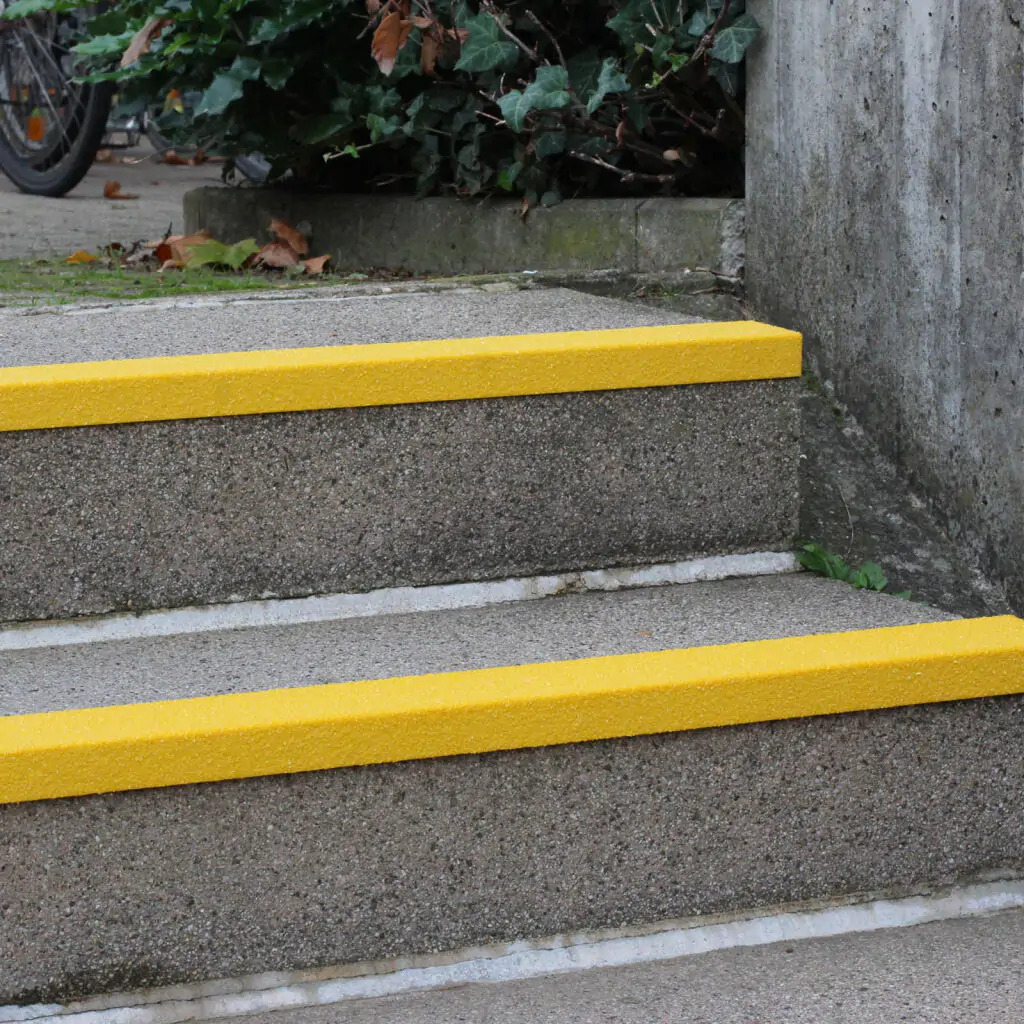
Are you looking to add a finishing touch to your stairs while also enhancing safety? Installing stair nosing is the perfect solution! Stair nosing not only provides a professional look to your staircase but also adds an extra layer of safety by reducing the risk of slips and falls.
Plus, it’s a DIY project that you can easily tackle at home with just a few simple tools and materials. In this guide, we’ll walk you through the process of installing stair nosing in 6 easy steps.
1: Gather Your Materials
Before getting started, gather all the necessary materials. You’ll need:
- Stair nosing strips
- Measuring tape
- Pencil
- Safety goggles
- Handsaw or mitre saw
- Adhesive
- Clamps
- Hammer
- Nails or screws
2: Measure and Cut
Begin by measuring the length of each stair tread where you’ll be installing the stair nosing. Use a measuring tape to ensure accuracy.
Once you have the measurements, transfer them onto the stair nosing strips and mark the cutting lines with a pencil. Using a handsaw or mitre saw, carefully cut the stair nosing strips to size.
3: Prepare the Staircase
Before installing the stair nosing, make sure the staircase is clean and free of any debris. This will ensure better adhesion and a cleaner finish.
If the stairs are carpeted, remove the carpet from the front edge of each tread where the stair nosing will be installed.

4: Apply Adhesive
Apply a generous amount of adhesive to the back of each stair nosing strip. Make sure to spread the adhesive evenly to ensure a strong bond.
Once the adhesive is applied, carefully position the stair nosing strip on the front edge of the stair tread, ensuring it is aligned properly.
5: Secure in Place
Once the stair nosing strip is in position, use clamps to hold it securely in place while the adhesive dries.
Alternatively, you can use nails or screws to secure the stair nosing strip to the stair tread for added stability. Hammer the nails or screw the screws through the pre-drilled holes in the stair nosing strip.
6: Allow to Dry and Test
Allow the adhesive to dry completely according to the manufacturer’s instructions before removing the clamps.
Once dry, give the stair nosing a gentle tug to ensure it is securely attached to the stair tread. Congratulations! You’ve successfully installed stair nosing on your staircase.
Conclusion
Installing High-quality industrial handrail at home doesn’t have to be daunting. By following these six easy steps, you can enhance both the safety and aesthetics of your staircase effortlessly. Remember to measure accurately, choose the right materials, and prioritise safety throughout the process. Whether you’re a seasoned DIY enthusiast or a novice homeowner, this guide empowers you to tackle this project with confidence.
With a little patience and attention to detail, you’ll soon admire the finished result – a staircase that not only looks great but also provides added stability and protection for you and your loved ones. So go ahead and take the first step towards safer, more stylish stairs today!
-
Welcome to the comprehensive guide on choosing the perfect pet ramp for your furry friend! As pet lovers, let’s understand the importance of providing our four-legged companions with the support and assistance they need to navigate their surroundings comfortably.
In this guide, let’s delve into the various aspects of selecting a pet ramp, considering factors such as your pet’s unique requirements, the different types of ramps available, materials and durability, size and weight capacity, portability and storage, as well as essential safety features. Whether you have a small pup, a senior dog, or a feline friend, we aim to equip you with the knowledge to make an informed decision that enhances your pet’s quality of life.
- Understanding Your Pet’s Needs
Understanding your pet’s specific needs is crucial when Buying a Best pet ramps Online. Pets come in all shapes and sizes, and each has its unique set of requirements. Factors such as age, size, and any existing mobility issues play a significant role in determining the most suitable ramp for your pet.
Take the time to observe your pet’s behaviour and movement patterns to gain insights into their comfort level and any challenges they may face when accessing elevated surfaces. By understanding your pet’s needs, you can make a well-informed decision when selecting a pet ramp that caters to their individual requirements.
- Types of Pet Ramps
When exploring the world of pet ramps, you’ll encounter a variety of options, each designed to cater to specific needs. Folding ramps, telescoping ramps, and fixed ramps are among the most common types available. Folding ramps offer convenience and portability, making them ideal for travel and versatile usage.
Telescoping ramps provide adjustable length, offering flexibility in various situations. Fixed ramps, on the other hand, are sturdy and reliable for consistent use. Each type has its unique features and benefits, and understanding these distinctions will guide you in making the best choice for your pet.
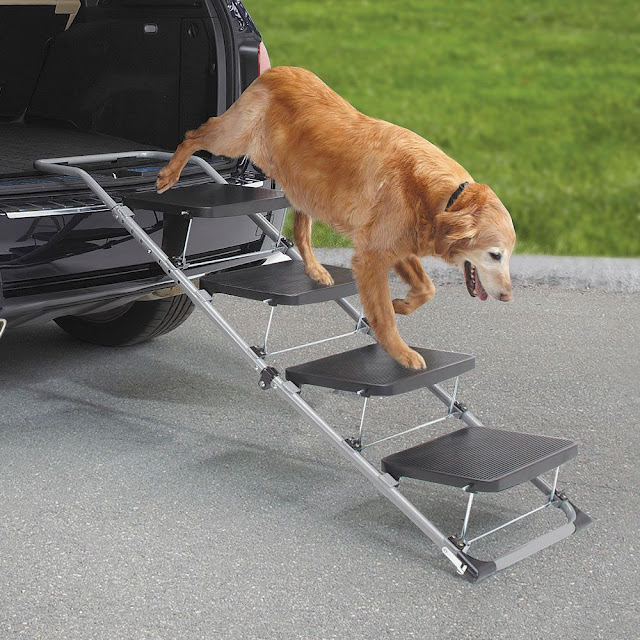
- Materials and Durability
The materials used in constructing pet ramps play a significant role in their durability and safety. Common materials include plastic, aluminium, and wood, each with its own set of advantages. Plastic ramps are lightweight and easy to maintain, while aluminium ramps offer durability and strength. Wood ramps provide a natural aesthetic appeal and sturdiness.
When selecting a pet ramp, it’s essential to consider the longevity of the material and its ability to withstand regular use. Durability and safety should be top priorities to ensure that the ramp remains a reliable aid for your pet over time.
- Size and Weight Capacity
Measuring your pet and determining the appropriate size and weight capacity required for a pet ramp is a critical step in the selection process. A ramp that aligns with your pet’s size and weight ensures a comfortable and secure experience.
Whether you have a small breed, a large dog, or a multi-pet household, choosing a ramp with sufficient weight capacity is essential. By carefully considering your pet’s measurements and weight, you can select a ramp that provides the necessary support without compromising safety.
- Portability and Storage
Portability and storage are practical considerations, especially for pet owners who lead active lifestyles or enjoy travelling with their furry companions. Portable pet ramps offer convenience, allowing you to provide accessibility for your pet wherever you go.
Whether it’s a weekend getaway, a visit to the vet, or simply moving the ramp within your home, selecting a ramp that is easy to store and transport adds to its overall utility. Foldable and lightweight ramps are excellent choices for those seeking versatility and ease of use.
- Safety Features
The safety of your pet is paramount when choosing a pet ramp. Key safety features to look for include non-slip surfaces, side rails, and stabilising mechanisms. Non-slip surfaces provide traction and stability, minimising the risk of slips and falls.
Side rails offer additional support and guidance for your pet as they ascend or descend the ramp. Stabilising mechanisms ensure that the ramp remains secure and steady during use. Prioritising safety features in your selection process is crucial for preventing accidents and injuries and promoting a positive experience for your pet.
Final Thoughts
Selecting the perfect pet ramp involves careful consideration of your pet’s unique needs, the various types of ramps available, materials and durability, size and weight capacity, portability and storage, as well as essential safety features. By understanding these aspects and taking them into account, you can make an informed decision that enhances your pet’s mobility and comfort.
Remember, choosing a suitable ramp is crucial for your furry friend’s comfort and well-being. This guide aims to provide you with valuable insights into selecting a reliable option that enriches your pet’s quality of life. Whether you have a playful pup, a beloved senior pet, or a feline friend, a well-chosen pet ramp can make a significant difference in their daily experiences.
Source By – http://tinyurl.com/mpuypca5
-
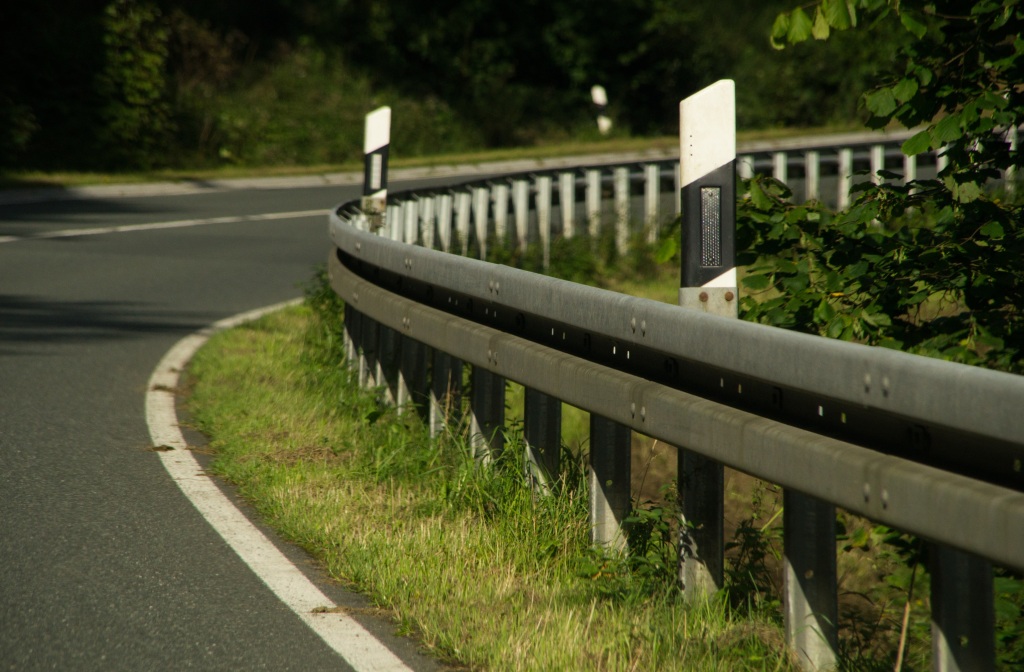
Have you ever wondered how those metal barriers along the sides of highways help prevent accidents? These guard rail installation play a crucial role in ensuring the safety of drivers and passengers on the road. In this blog post, we will explore the importance of guard rail and how they work to prevent accidents on highways.
What are Guard Rails?
Guard rails are barriers installed along the edges of roads, highways, and bridges to prevent vehicles from veering off the road and into potentially dangerous areas. They are typically made of metal, concrete, or wood and are designed to absorb the impact of a vehicle, redirecting it back onto the road and reducing the severity of a crash.
Types of Guard Rails
There are several types of guard rails used on highways, including:
- W-beam guard rails: These are the most common type of guard rails and are made of a series of connected W-shaped beams.
- Cable guard rails: These guard rails are made of steel cables strung between posts and are often used in areas with high speeds.
- Concrete guard rails: These are made of concrete barriers and are used in areas where a more substantial barrier is needed.
How Do Guard Rails Prevent Accidents?
Absorb Impact
One of the key ways guard rails prevent accidents is by absorbing the impact of a vehicle that veers off the road. When a vehicle hits a guard rail, the rail deforms and redirects the vehicle back onto the road, reducing the force of the impact and preventing the vehicle from crashing into obstacles like trees or buildings.
Redirect Vehicles
Guard rails are designed to redirect vehicles back onto the road in the event of a crash. By guiding the vehicle along the length of the guard rail, drivers are given a second chance to regain control and avoid a more serious accident.
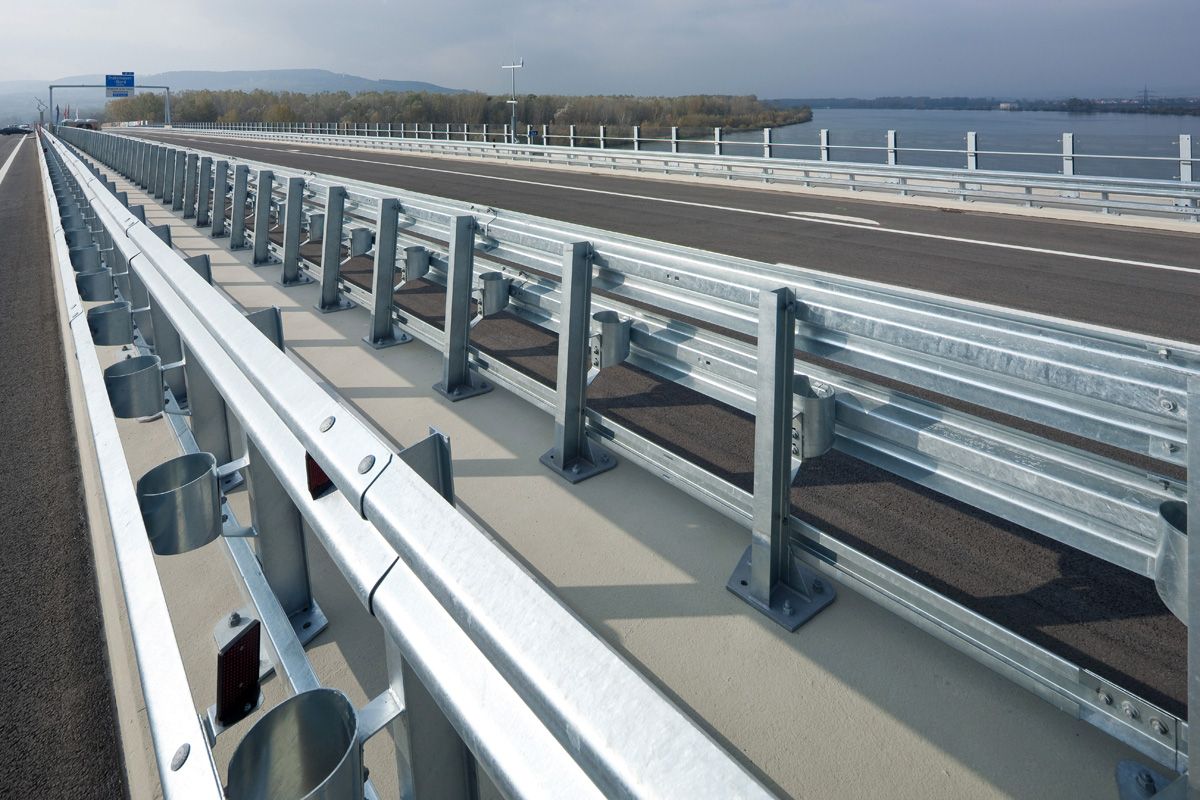
Provide Visual Cues
Guard rails also provide visual cues to drivers, helping them stay on the road and navigate sharp curves or dangerous areas. The presence of guard rails can alert drivers to potential hazards and encourage them to stay focused on the road ahead.
Benefits of Guard Rails
Safety
The primary benefit of guard rails is the safety they provide to drivers and passengers on the road. By preventing vehicles from leaving the road and crashing into obstacles, guard rails help reduce the severity of accidents and save lives.
Cost-Effective
Guard rails are a cost-effective safety measure for highways, as they are relatively easy to install and maintain. The cost of installing guard rails is far less than the cost of repairing damage from accidents or injuries.
Legal Protection
Guard rails also provide legal protection to highway authorities and municipalities. By installing guard rails, they demonstrate a commitment to safety and can reduce their liability in the event of an accident.
Conclusion
Guard rails are a critical safety feature on highways, helping prevent accidents and protect drivers and passengers from harm. By absorbing impact, redirecting vehicles, and providing visual cues, safety vest play a vital role in keeping our roads safe. Next time you’re driving on the highway, take a moment to appreciate the important work that guard rails do to keep you safe.
-
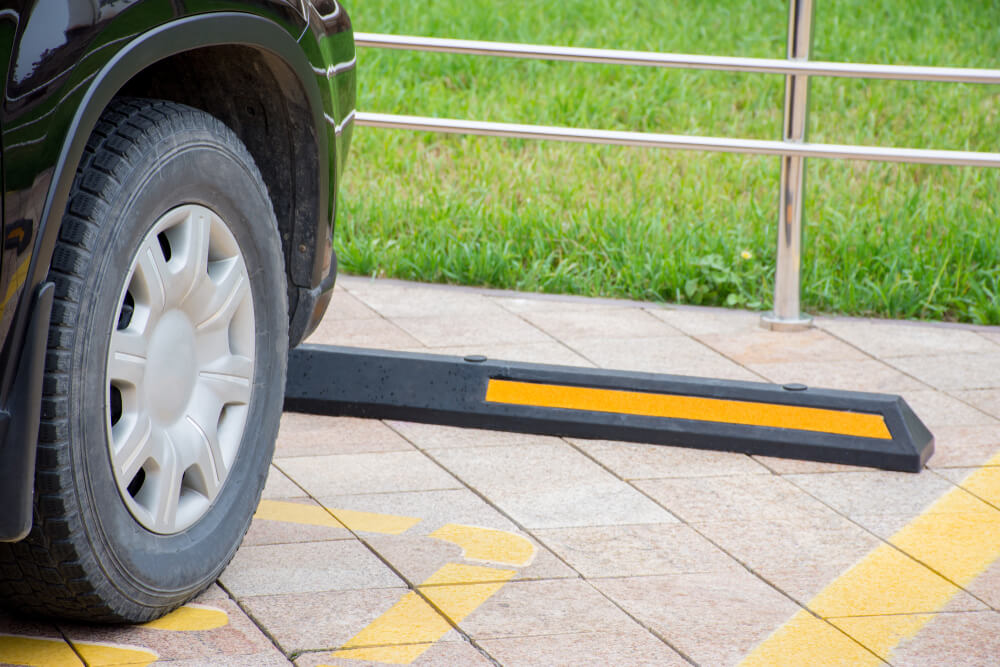
When it comes to parking spaces, creating a safe and organized environment is essential for the well-being of pedestrians and the protection of vehicles and property.
One often overlooked component of a well-designed parking area is the humble wheel stop. In this comprehensive guide, we will delve into the importance of wheel stops and how they contribute to the functionality and safety of parking spaces.
Understanding Wheel Stops
Wheel stops, also known as parking blocks or wheel chocks, are sturdy barriers placed at the end of parking spaces to prevent vehicles from overstepping their bounds. They serve as a physical barrier to stop vehicles from rolling too far forward, ensuring they are parked within the designated area.
Wheel stops come in various materials, including concrete, rubber, and plastic, each with its own set of advantages and applications. Proper installation and positioning of wheel stops are crucial to their effectiveness, as they need to be securely anchored to the ground and positioned to align with the intended parking space.
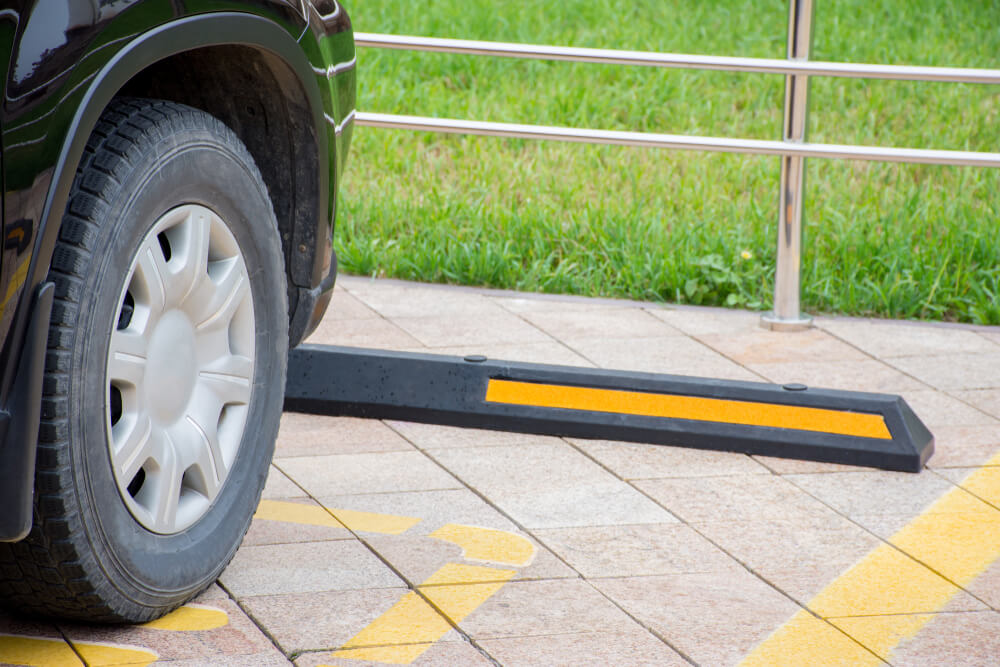
The Benefits of Wheel Stops
The installation of wheel stops offers a multitude of benefits for both pedestrians and vehicles. Firstly, they greatly enhance safety by providing a clear and visible boundary for drivers, reducing the risk of accidents involving pedestrians and other vehicles.
Additionally, wheel stops play a vital role in preventing damage to property and landscaping by acting as a barrier between vehicles and surrounding structures. Furthermore, they promote the efficient use of parking space by ensuring that vehicles are parked in an orderly manner, maximizing the available area and preventing congestion.
Considerations for Wheel Stop Installation
When considering the installation of wheel stops, it is imperative to comply with local regulations and guidelines to ensure that the parking area meets safety standards and requirements.
Choosing the right material for wheel stops is also crucial, as it impacts durability, effectiveness, and long-term maintenance. Additionally, proper maintenance practices, such as regular inspections and repairs, are essential to guarantee the continued functionality of wheel stops and to uphold the safety of the parking area.
Conclusion
In conclusion, the installation and maintenance of wheel stops are integral to creating a safe, organized, and efficient parking environment. By understanding the purpose and benefits of wheel stops, as well as adhering to best practices for their installation and upkeep, individuals and businesses can contribute to the overall safety and functionality of parking spaces.
It is our hope that this guide has shed light on the importance of wheel stops and encouraged readers to prioritize their implementation for the betterment of parking spaces everywhere.
Source By – http://tinyurl.com/4m585x49
-
In the hustle and bustle of daily life, safety at home is often overlooked. We’re all guilty of rushing around our houses, sometimes forgetting that a slip or fall can happen when we least expect it. That’s where Non Slip Matting come in – they’re the unsung heroes of home safety, quietly providing traction and stability to keep you and your loved ones safe.
But with so many options available, how do you choose the right one for your needs? Fear not, because in this ultimate guide, we’ll walk you through everything you need to know about selecting the perfect anti slip mat for your home.
Understanding the Importance of Anti Slip Mats
Before diving into the nitty-gritty of choosing the right anti slip mat, let’s take a moment to understand why they’re essential for home safety.
.jpg)
Anti slip mats are specifically designed to prevent slips and falls by providing traction on various surfaces. Whether it’s in the bathroom, kitchen, or hallway, these mats offer stability and reduce the risk of accidents, especially in high-traffic areas.
Assessing Your Needs
The first step in selecting the perfect anti-slip mat is to assess your specific requirements. Consider the areas in your home where slips and falls are most likely to occur. Are you primarily concerned about safety in the bathroom, where water can make surfaces slippery? Or perhaps you need a mat for the kitchen to prevent accidents while cooking.
By identifying the areas that require additional traction, you can narrow down your options and focus on finding the most suitable anti-slip mats.
Choosing the Right Material
When it comes to anti-slip mats, not all materials are created equal. Different surfaces require different types of traction, so it’s essential to choose a material that’s suitable for your specific needs.
Rubber mats are an excellent choice for areas prone to moisture, such as bathrooms and kitchens, as they provide excellent grip even when wet. Meanwhile, foam mats are ideal for cushioning hard surfaces like tile or hardwood floors, offering both traction and comfort.
Considering Size and Shape
Once you’ve determined the material that best suits your needs, it’s time to consider the size and shape of the anti-slip mat. Measure the area where you intend to place the mat to ensure a perfect fit.
Additionally, consider the shape of the space – whether it’s rectangular, square, or circular – and choose a mat that complements the layout. Remember, a well-fitted anti slip mat not only enhances safety but also adds aesthetic appeal to your home.
Maintenance and Durability
Investing in anti-slip mats is not just about safety – it’s also about longevity. Look for mats that are easy to clean and maintain, as this will ensure they remain effective in preventing slips and falls over time.
Additionally, consider the durability of the material, especially if the mat will be placed in a high-traffic area. Opt for anti-slip mats that are made from quality materials and are designed to withstand regular use without losing their traction.
Final Thoughts
Anti slip mats are essential additions to any home, providing much-needed traction and stability to prevent slips and falls. By understanding your specific needs, choosing the right material, considering size and shape, and prioritising maintenance and durability, you can select the perfect anti slip mat to enhance safety in your living spaces.
So don’t wait until an accident happens – invest in anti slip mats today and enjoy peace of mind knowing that you and your loved ones are protected.
